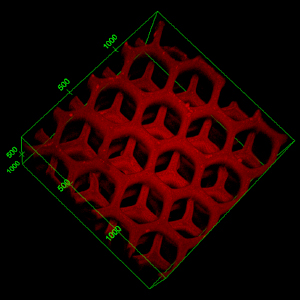
The dream of 3D printed human organs got slightly closer to reality with the development of 3D printed tissue that mimics liver functions.
Researchers at the University of California, San Diego have developed a technique for 3D printing a type of filter suitable for capturing toxins. It’s based on a nano particle that is capable of intercepting specific types of toxins. The 3D printing component is a hydrogel matrix that holds the nano particles in position.
By 3D printing a sheet of this matrix, you create a working filter that can capture toxins, which is more or less what your liver does for you.
This is by no means something you could implant in a person; it is merely a very interesting experiment that may eventually lead to a practical transplantation. Meanwhile the technology is suitable for external filtering, in a dialysis-like operation. Apparently the nanoparticles turn red when they encounter toxins.
This is a unique method of leveraging 3D printing; it’s a way to present ANY nanoparticle to the environment in a uniform manner. We can envision all types of filters being 3D printed, so long as researchers can develop unique nanoparticles.
Via Kurzweil

